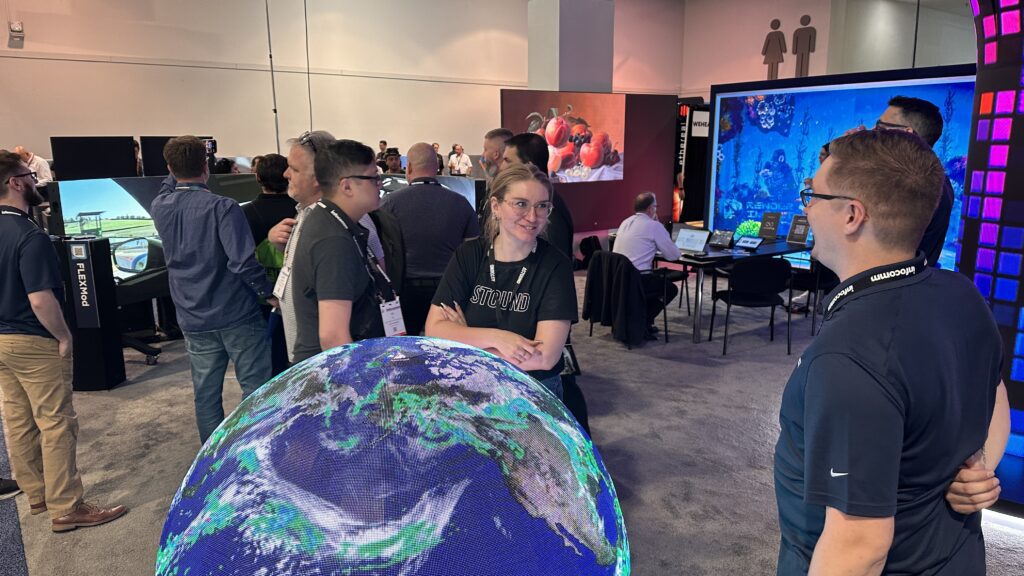Over the last few decades, Infocomm has secured its place as a premier event for hardware innovations in the audiovisual (AV) technology industry, and this year’s event once again highlighted the cutting-edge improvements and trends shaping the future of AV.
Here we share insights from the event, outlining the significant trends observed at this year’s event, as well as reflect on how these innovations will undoubtedly affect the work we do for our clients in the coming year.
Key Hardware Trends at Infocomm 2024
Slow Pace of Innovation
The overall pace of innovation appeared to be more incremental rather than revolutionary this year. The event showcased numerous small enhancements in features and functions rather than radical technological breakthroughs.
This phase of incremental development suggests that the industry is currently focusing on refining existing technologies, with no sign of immediate revolutionary advancements on the horizon.
AI Integration: Software vs. Peripheral
AI integration is advancing at both the software and peripheral levels. Currently, AI capabilities are embedded in devices such as cameras and microphones. However, there is a growing expectation that AI will become increasingly centralized at the software level, streamlining processes and reducing the need for complex peripheral AI systems. This shift will likely enhance functionality and create more efficient and cost-effective AV solutions.
USB Extension Enhancements
One of the notable innovations at this year’s event was the introduction of valence chipsets, which enable cost-effective USB 3.2 extension over standard twisted pair cabling.
This advancement significantly reduces the costs associated with USB extensions, improving system quality and connectivity without increasing expenses. These enhancements make it possible to extend connections from displays to tables up to 300 feet at a fraction of the previous costs, providing practical and economical solutions for various AV setups.
Commoditization of LED Products
The market for LED products has seen a substantial increase in manufacturers, leading to a saturated market and reduced prices. This commoditization shifts the focus from hardware features to support services such as engineering, installation, and day-two support.
For clients, this trend translates into lower costs and more options for LED displays, enabling the design of cost-effective and high-quality AV setups.
How These Trends Impact AV Tech
Increasing Demand for LED and USB Enhancements
The reduction in LED costs and the improvement in USB extension capabilities allow us to design and implement budget-friendly, high-quality AV solutions for our clients and partners. These enhancements not only reduce system costs but also enhance connectivity and reliability in AV solutions. This trend has significant implications for us, at AV Tech.
Navigating AI Integration
We proactively advise clients on achieving the optimal balance between current peripheral AI and future software-level AI by tailoring solutions based on client needs, budgets, and readiness to adopt the latest technologies.
Addressing Industry Challenges
One of the key challenges in the AV industry is maintaining parity between fast-evolving software capabilities and slower-paced hardware advancements. We address this challenge by staying proactive, offering knowledgeable guidance, and providing adaptive solutions that bridge the gap between software and hardware innovation rates. We continue to anticipate increased hardware innovation as the industry recovers from supply chain disruptions.
Onward and Upward
Infocomm 2024 provided valuable insights into the current state and future direction of AV technology. While innovation is currently incremental, we remain at the forefront, offering informed, proactive solutions and maintaining strong client partnerships. This enables us to navigate the evolving landscape and deliver high-quality, cost-effective AV solutions to our clients.



